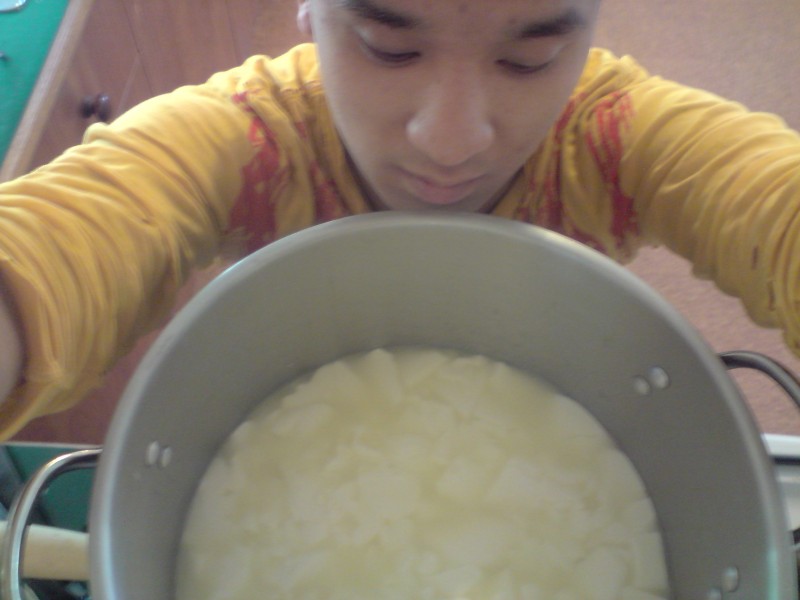i just finished looking over this interview. i thought parts might be relevant. (please don’t share with other just yet.)
especially, we seemed to have talked about these 3 paragraphs. the whole piece in below.
the picture is of making cheese… separating the curds and the whey (solids and liquid).
But also DICA isn’t a sort of “anti-gallery” thing. It has this opposition to galleries and the commercial world but it’s not denouncing them, it’s just another way of doing things.
ES: Is this necessary, or needed at this point, this kind of alternative. Do you feel there’s too much emphasis on galleries and the commercial side of things? Do you feel DICA is relevant, for this place, for this time, for this situation?
MY: On one side, any artist, art project, curator, etc. can get carried away and say this project is so necessary. But I’d have to say there are many more atrocities to be in the world dealt with before the atrocities of the Beijing art world, you know? So, on one side I would very much say, it’s an art project – not a necessity. That’s one of the beautiful things about art – that it’s not a necessity.
But on the other side, what I was definitely faced with, and DICA was generally faced with, was the question of “why make art in Beijing?” And that question really originated from the time when I first landed in Beijing before the Olympics (in April/May 2008). The activity here was really hyper and a Biennial worth of projects would open every couple of weeks. It’s quietened down now but there’s still a legacy of that, there’s still a lot of projects going on. To add to that activity, you have to be really sure you want to do something. There’s so much background noise, it’s so loud that not much gets heard over the top of it. So, you’ve got to be really sure about the reasons why you want to do it, but also the reasons why it might have some benefit, for the wider audience and yourself. We’re outside of the standard structure here and therefore it gives us a chance to think about DICA, to think about the structure itself and where the structure could break down. I’m talking about the gallery, the art mechanisms here, where it breaks down, or where it succeeds and where it doesn’t succeed, and what can be made better out of it, or what needs to be kept the same? As always it’s an intervention. Here partly into art’s mechanics.
the rest was deleted… wait for the publication.

One Comment